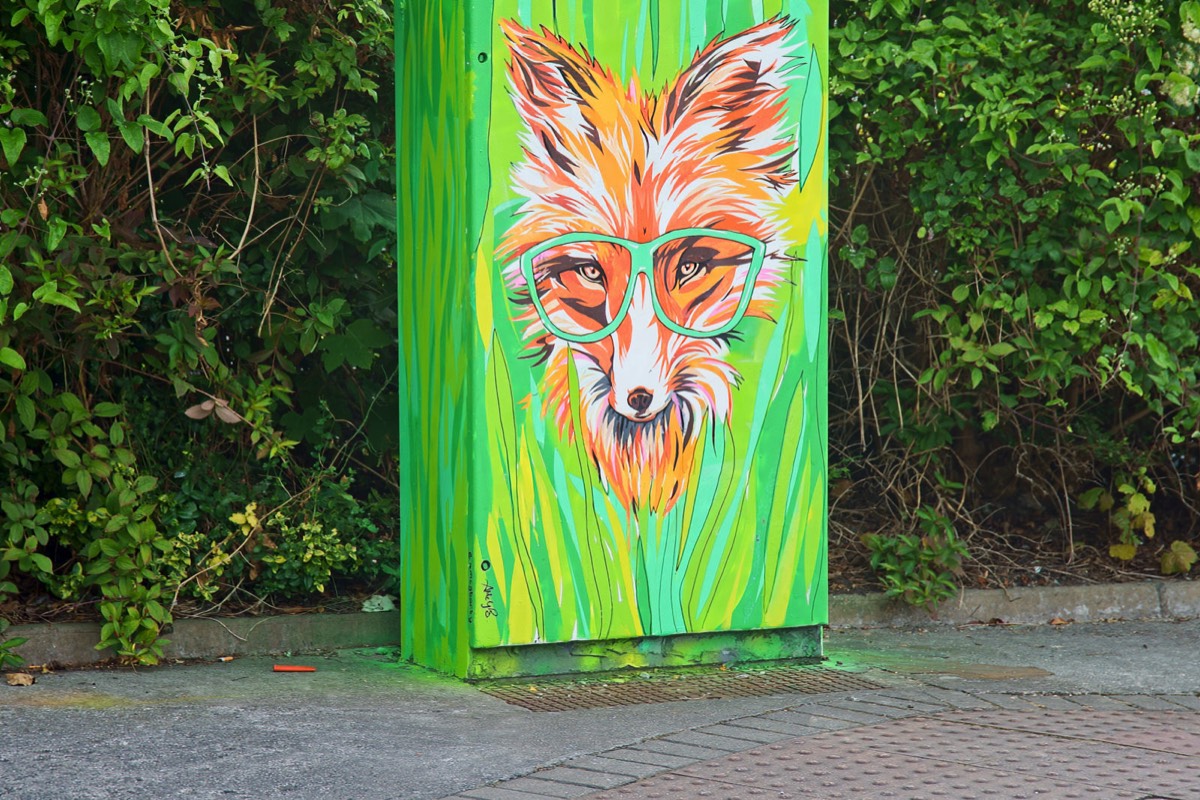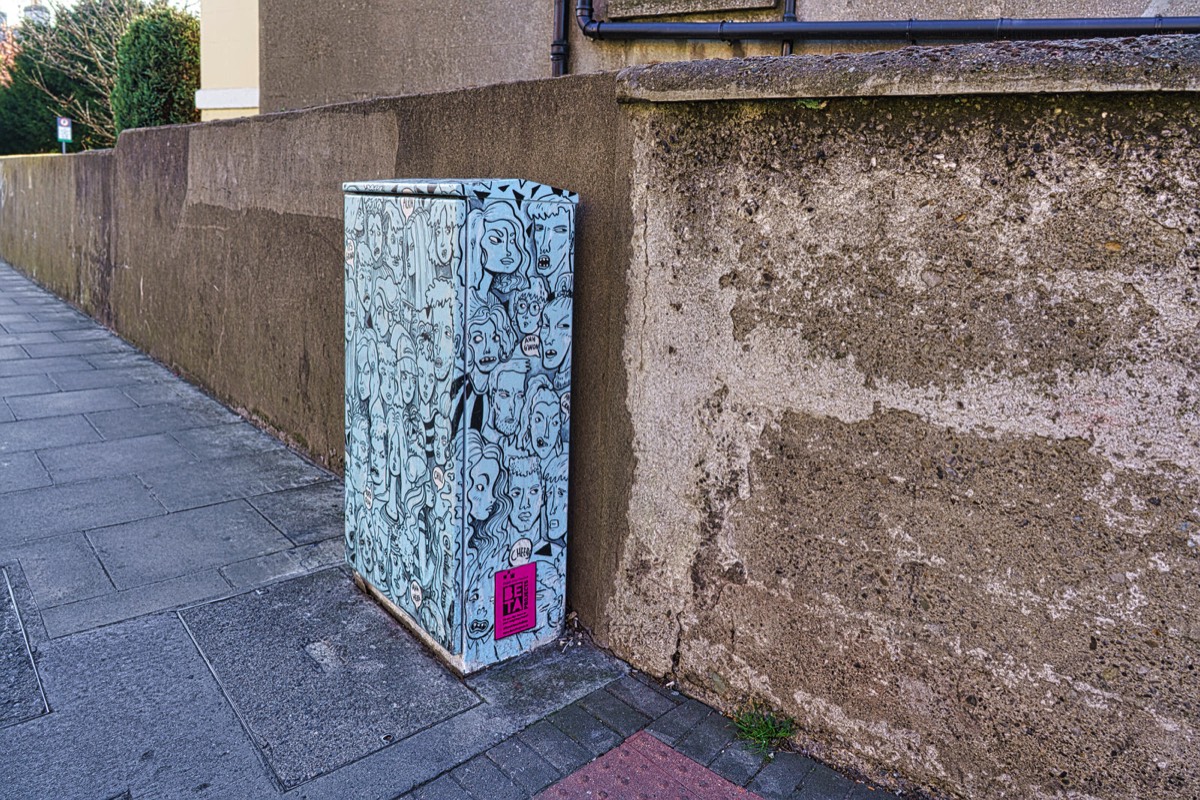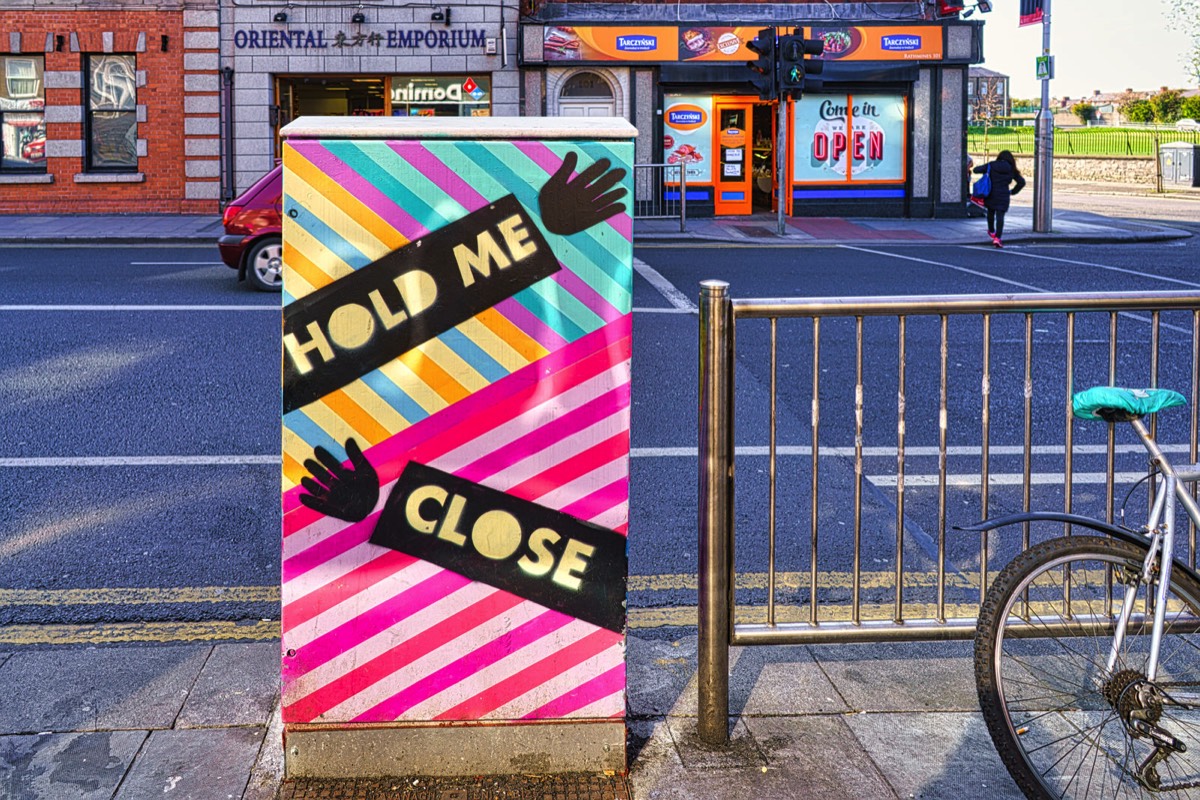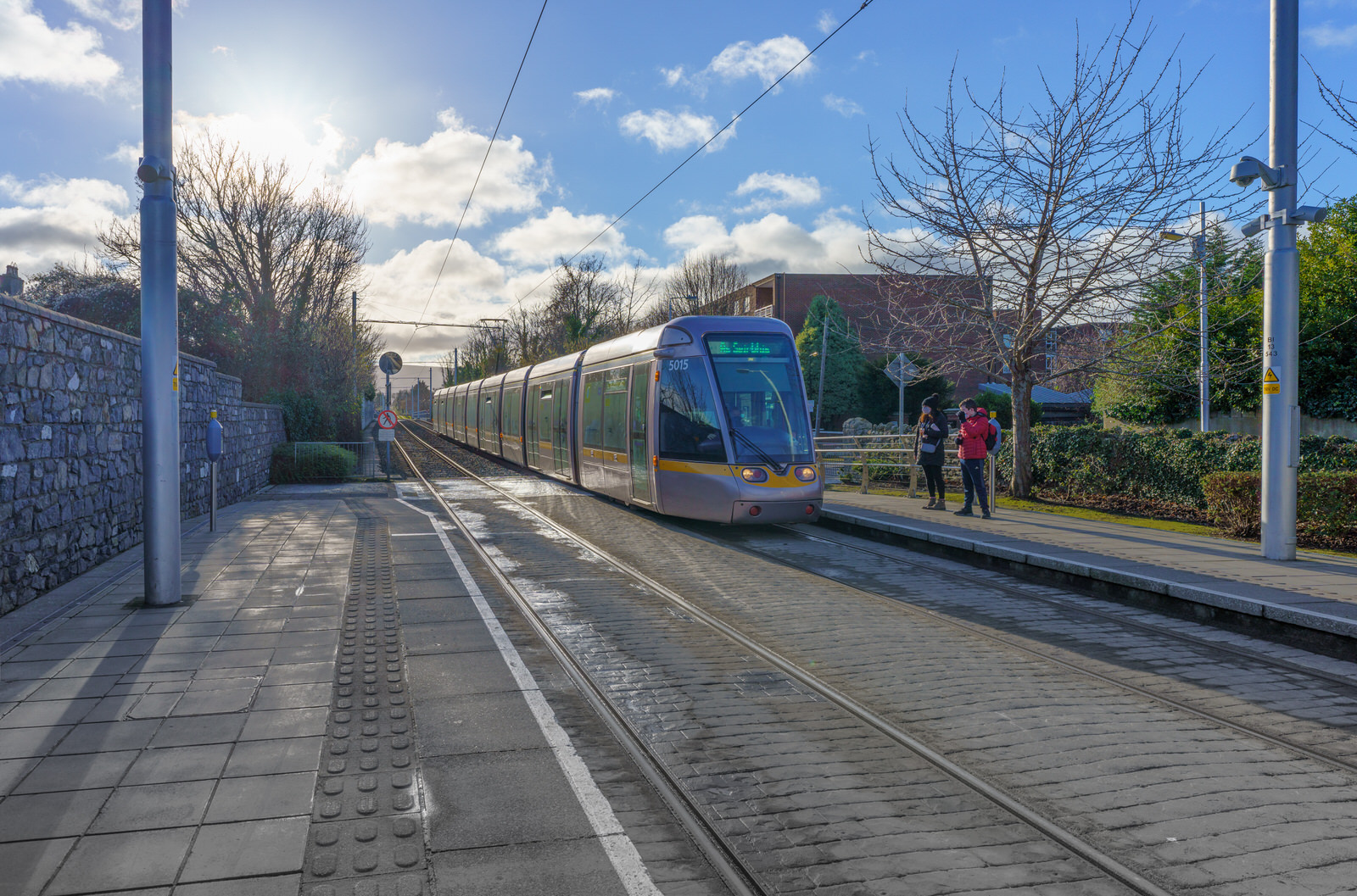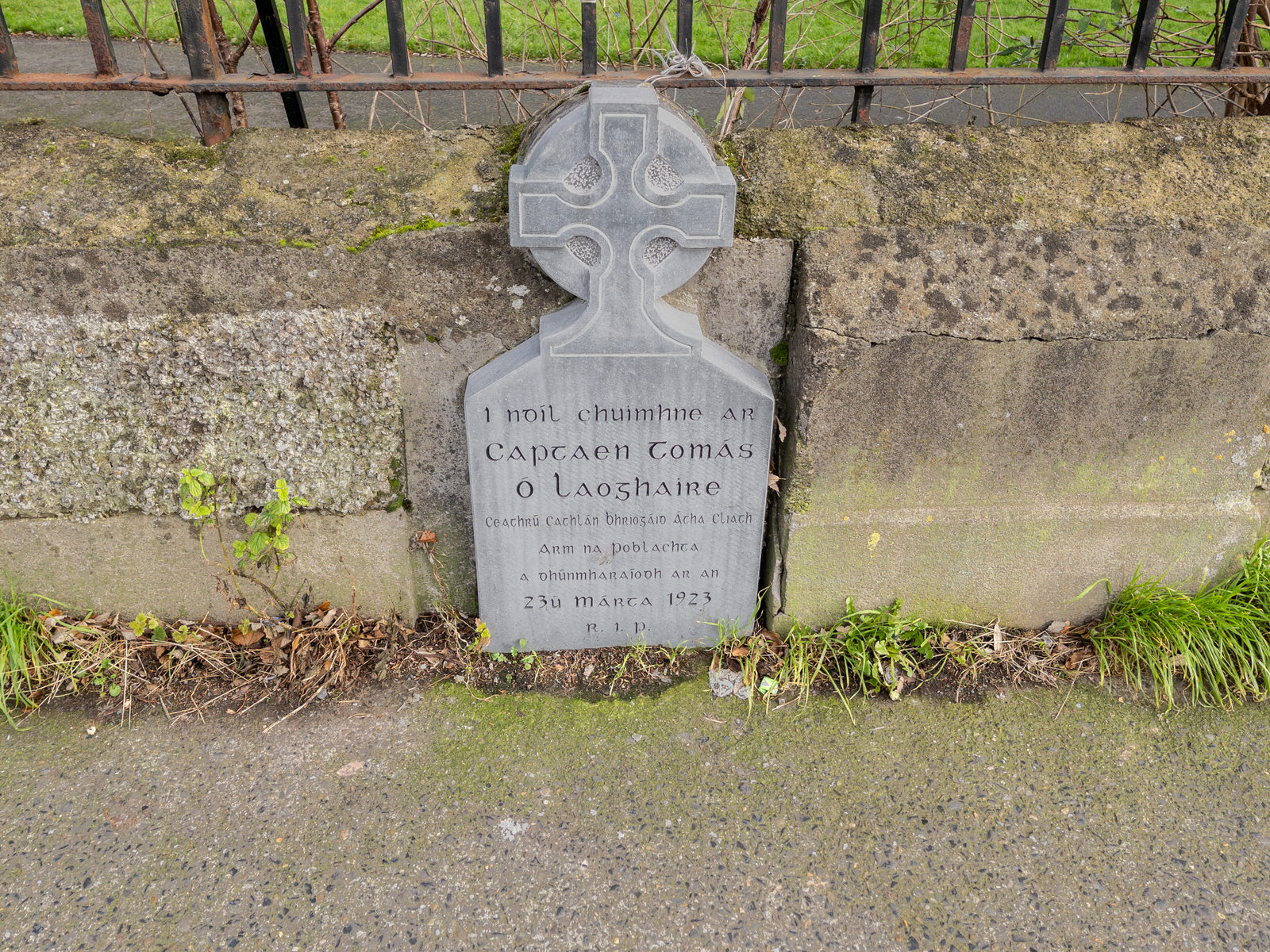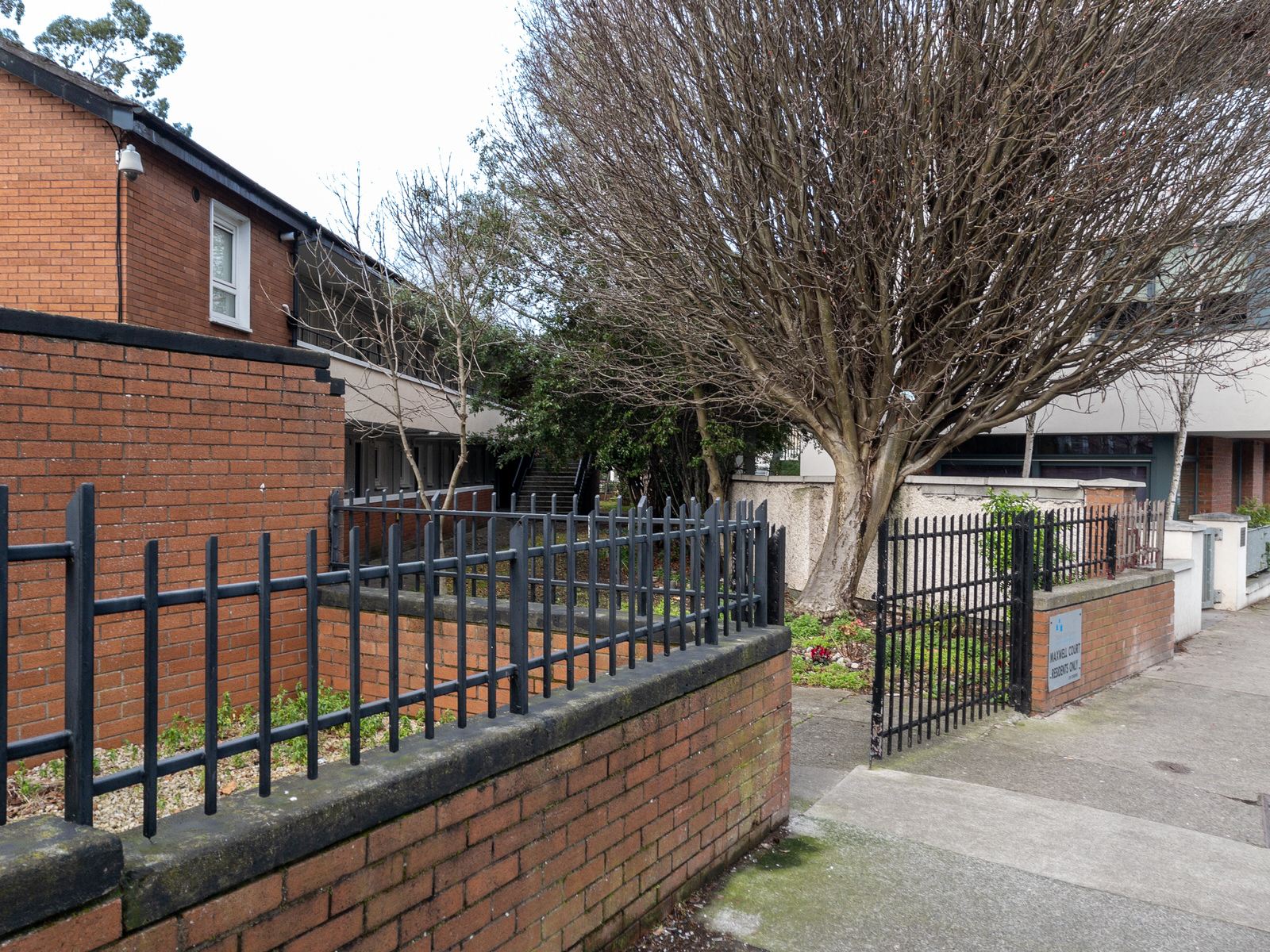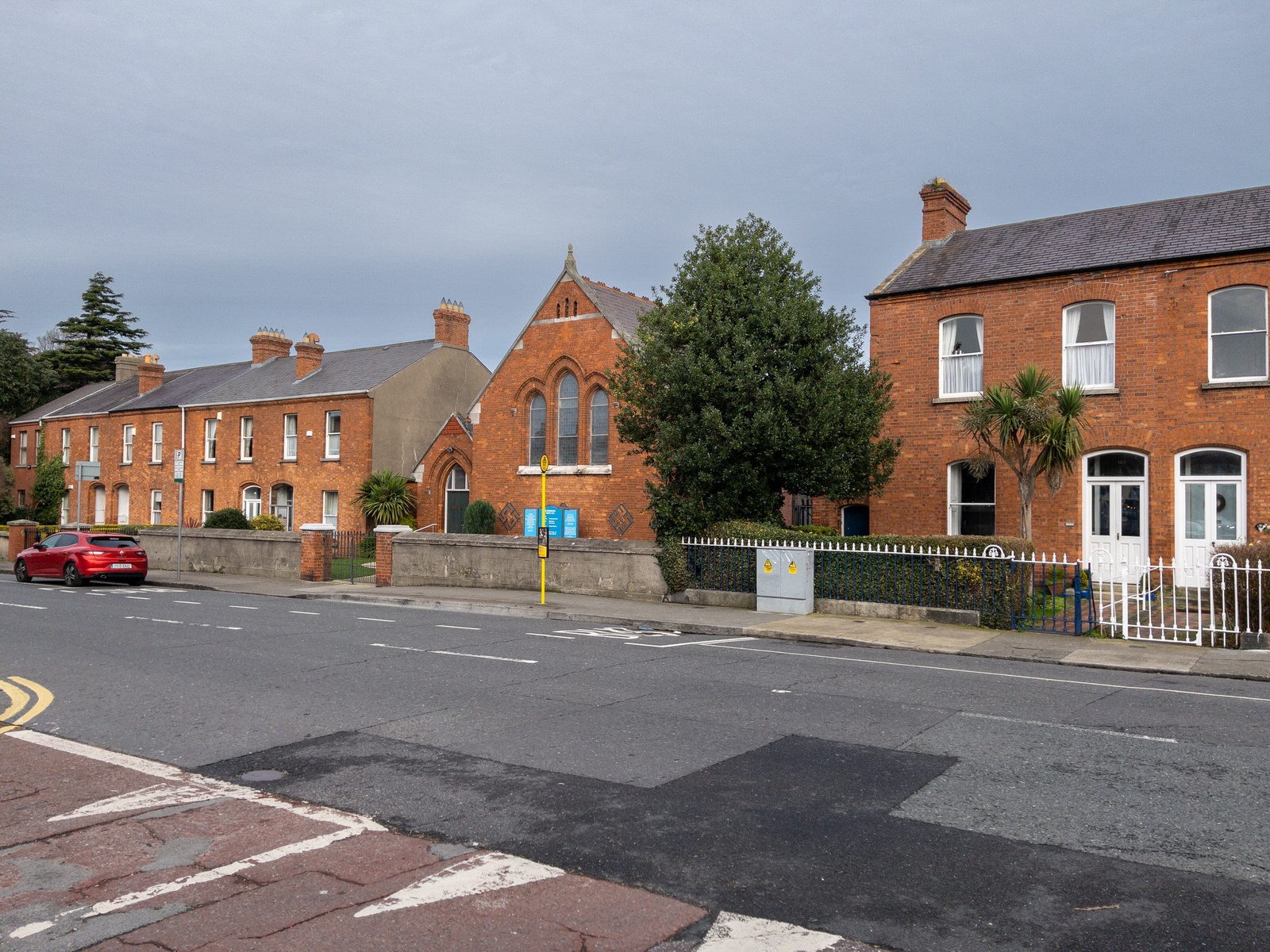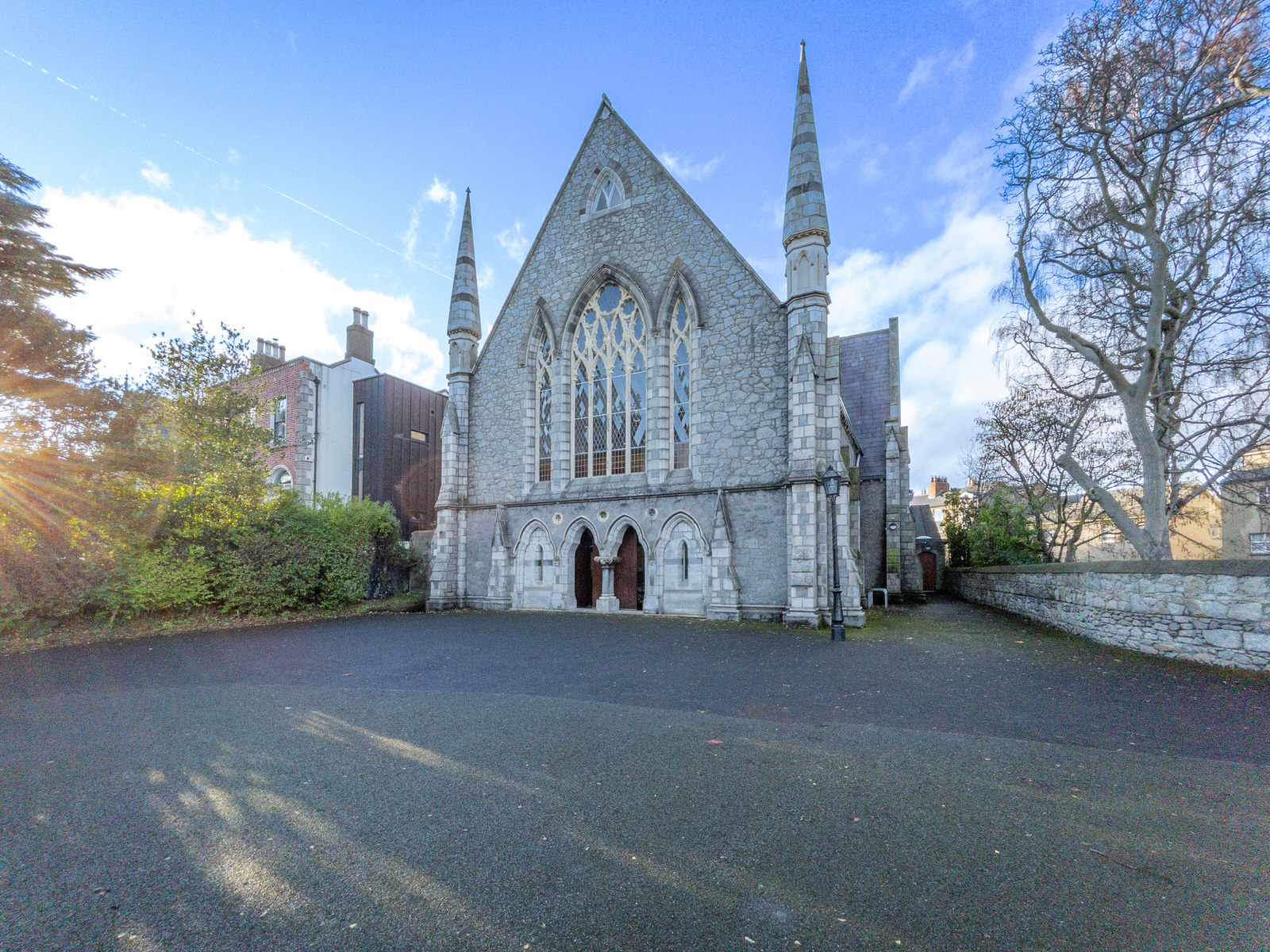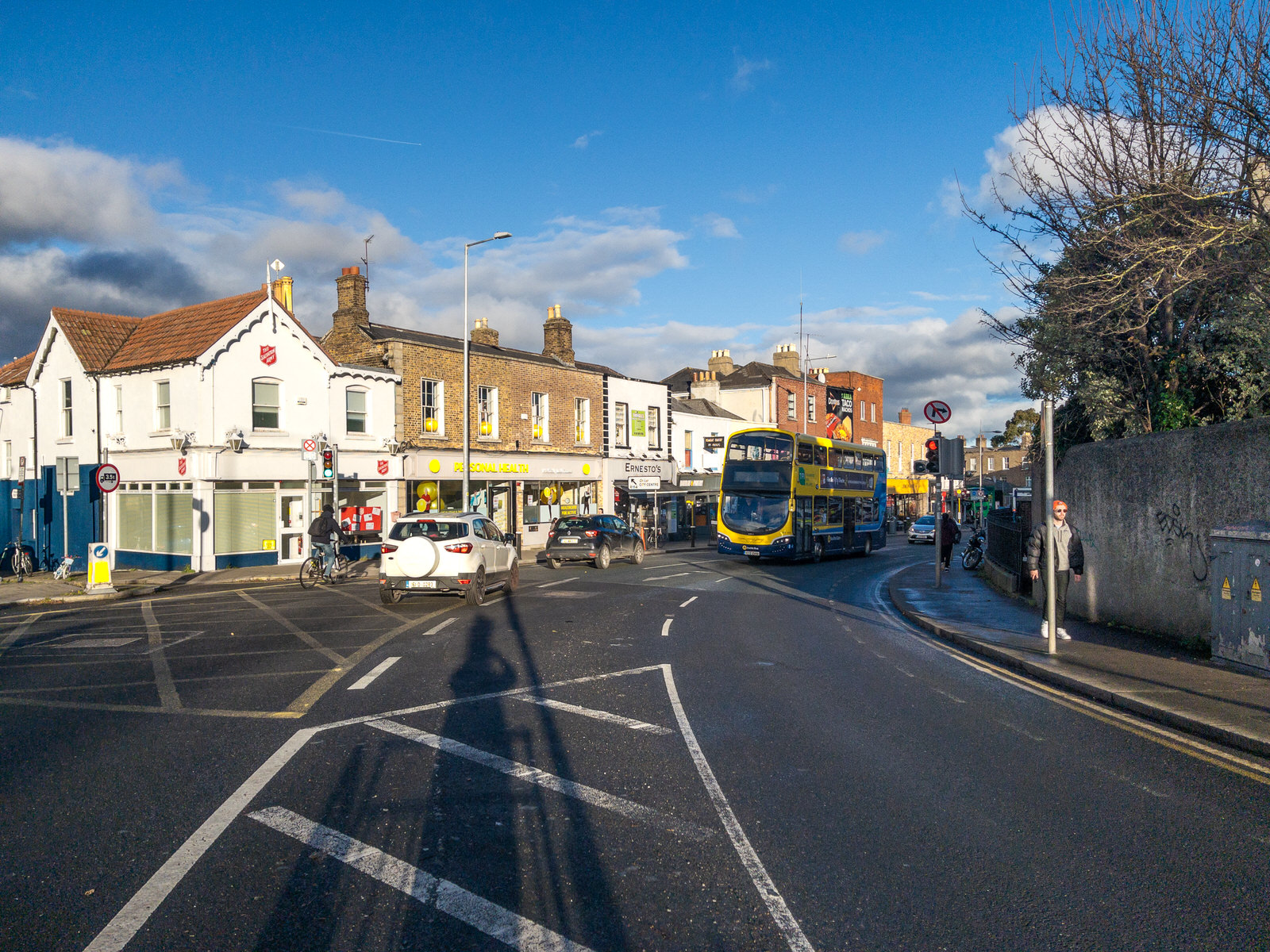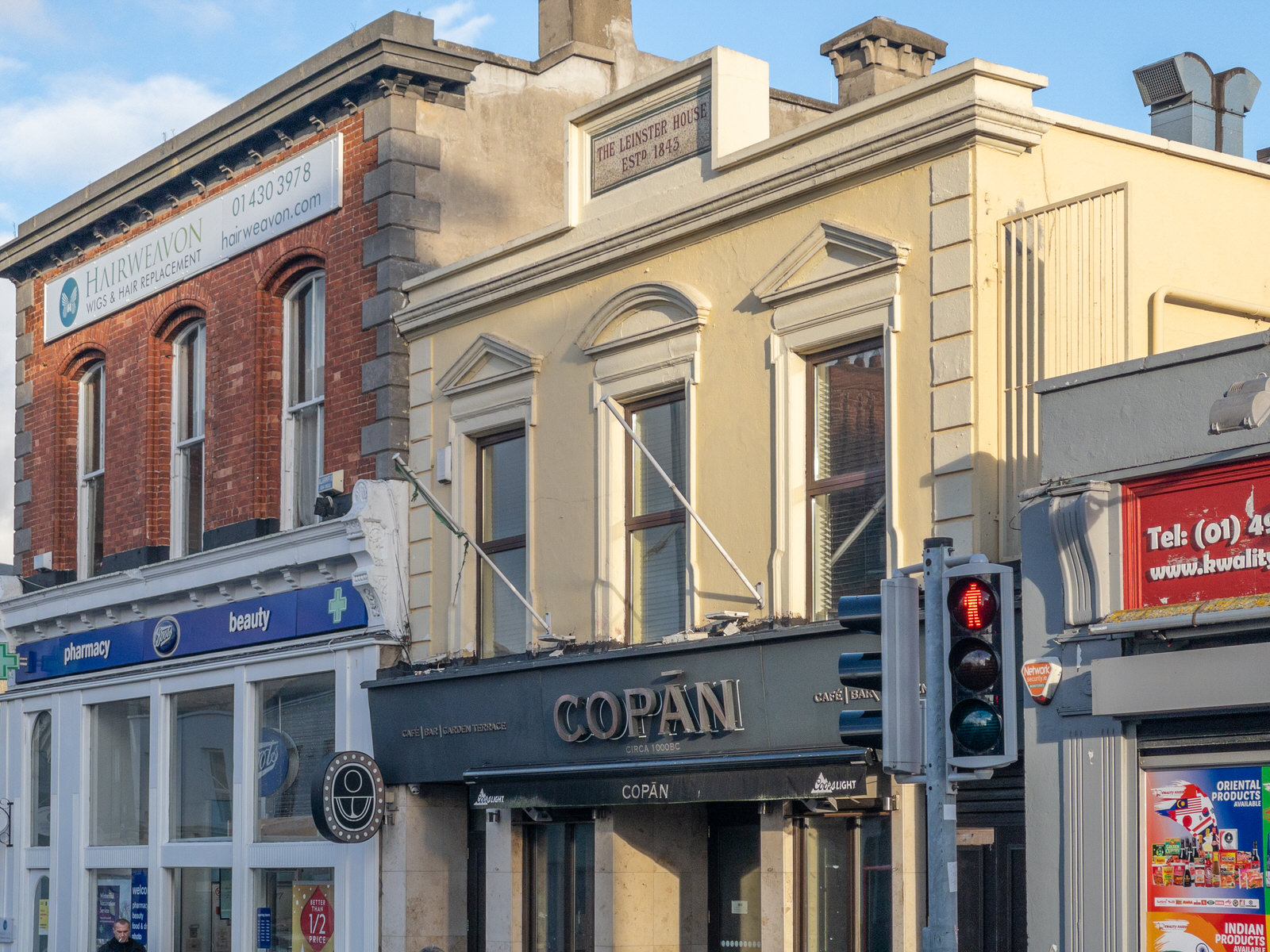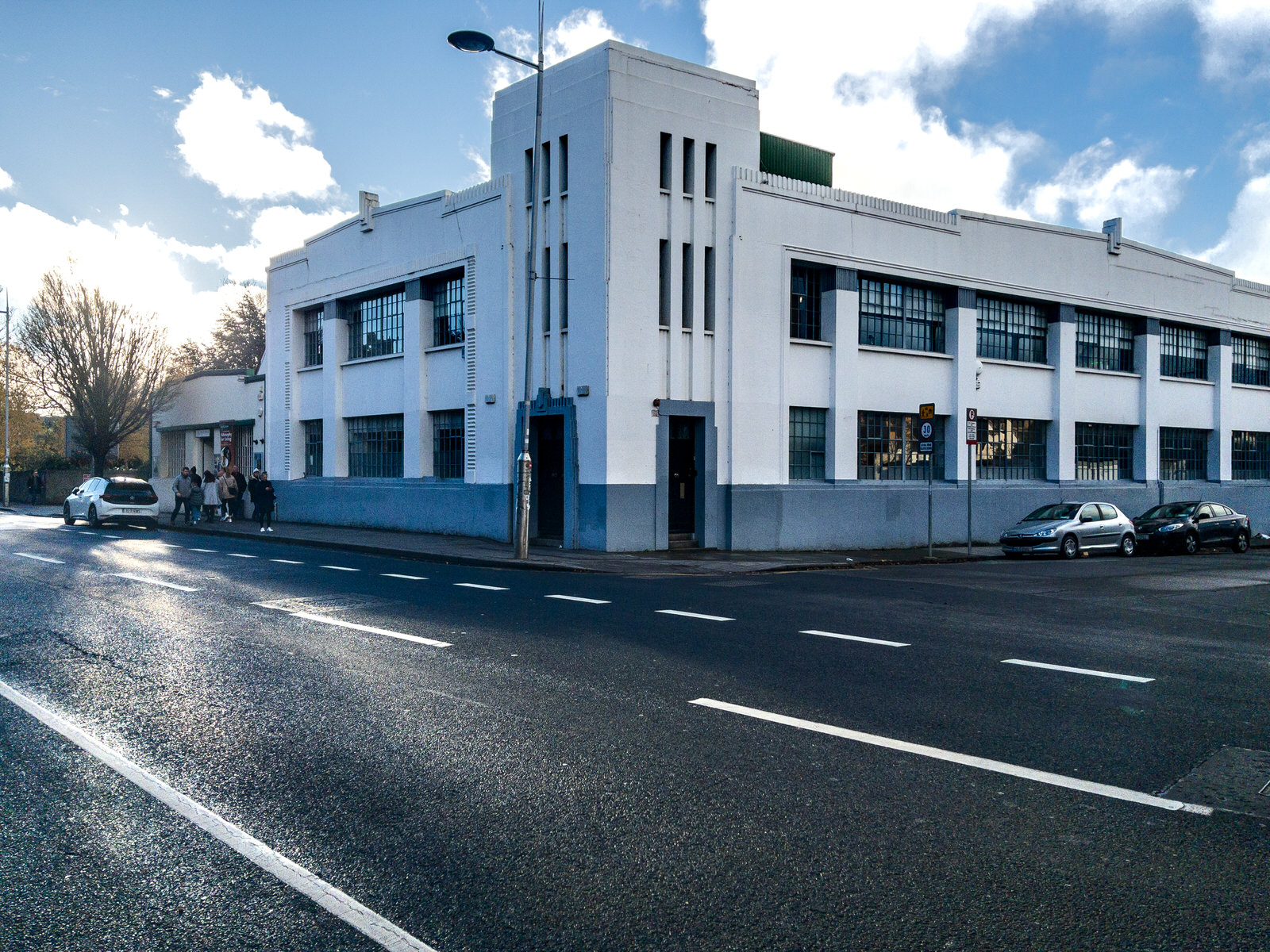RATHMINES AREA INCLUDING DARTRYAREAS OF DUBLIN
NIGHT VISION BY AISLING McGLACKEN-BYRNEPHOTOGRAPHED 3 AUGUST AND PUBLISHED IN DECEMBER 2022
MUINTIR NA CATHRACH BY KATIE LYONSPEOPLE OF THE CITY PHOTOGRAPHED APRIL 2016
SOUTH RICHMOND AVENUE - DARTRY MILLTOWN LUAS TRAM STOP
I did not know that this is South Richmond Avenue or that it is in Dartry.
Dartry is a small suburb of Dublin often seen as part of the broad Rathmines area. Among the locations in Dartry are Dartry Road, Temple Road, Orwell Park and Palmerston Park.
In the part of Dartry Road between Palmerston Park and Temple Road is located Trinity Hall, one of the student residences of Trinity College Dublin. The side gate opening on Dartry Road is the main pedestrian entrance to the Trinity Hall grounds.
Also on the Trinity College grounds at Dartry is the latest (since 1967) home of the centuries-old Trinity College Botanic Garden.
The Dropping Well pub at the riverside is built on the site of a mortuary established to deal with dead bodies carried down the river to the pool underneath the nearby waterfall. It was later a well-known destination for "bona fide" travellers who had to have gone more than 3 miles to be served a drink during the holy hour when Dublin pubs used to shut between 2.30 and 3.30 in the afternoon.
Dartry Road is known as the scene of the killing of IRA member Timothy Coughlin by police informer Sean Harling on the evening of 28 January 1928. It happened opposite 'Woodpark Lodge', where Harling lived at the time.
Máirtín Ó Cadhain the Irish author famous for writing Cré na Cille lived at 12 Sunbury Gardens.
Dartry House is an imposing two-storey mansion built about 1810 with several additions made later such as a turret which was incorporated in the building about 1900.
Its original owner was Obadiah Williams, a wealthy merchant of Huguenot origin. Among later owners was William Martin Murphy, who owned The Irish Independent, was involved with the Dublin United Tramways Company (DUTC) and was a central figure in the dispute known as the "Dublin Lockout" of 1913 where the union side was led by Jim Larkin. The DUTC constructed the tram line from the centre of Dublin to Dartry and Dartry House was built at the original place where the line ended. The terminus of the line and the associated sheds now house an engineering firm.
THOMAS O'LEARY MEMORIAL UPPER RATHMINES ROAD
I never noticed this memorial before but I discovered that it was in very poor condition and easy to miss until it was recently restored or replaced.
Thomas O’Leary was a 22-year-old Dubliner and member of the anti-Treaty IRA when he was shot dead by the Free State Army in March 1923.
Thomas O'Leary fought in the Irish War of Independence [the Black & Tan War]. He opposed the treaty and went with the anti-treaty IRA in the Civil War. He was a member of the 4th Battalion, Dublin Brigade IRA. According to various accounts he was arrested at a friend's house at Upper Rathmines Road on 23 Mar 1923 by Free State Army. His body was found the next day at Upper Rathmines. He had been shot 22 times [a bullet for each year of his life].
The jury at the subsequent inquiry came to the conclusion that O’Leary was “murdered by persons unknown … by armed forces, and that the military did not give us sufficient assistance to investigate the case.”
UPPER RATHMINES ROADJANUARY 2022
There is a building on Upper Rathmines Road which was opened as a Protestant And Orange Hall in November 1890.
The Westminster parliamentary borough of Rathmines had a unionist majority up to independence in 1922. The last Member of Parliament it returned was Maurice Dockrell.
For several hundred years Rathmines was the location of a "spa" - in fact a spring - the water of which was said to have health-giving properties. It attracted people with all manner of ailments to the area. In the 19th century it was called the "Grattan Spa", as it was located on property once belonging to Henry Grattan, close to Portobello Bridge. The "spa" gradually fell into a state of neglect as the century progressed, until disputes arose between those who wished to preserve it and those (mainly developers) who wished to get rid of it altogether. In 1872 a Dr. O'Leary, who held a high estimate of the water quality, reported that the "spa" was in "a most disgraceful state of repair", upon which the developer and alderman Frederick Stokes sent samples to the medical inspector, Dr. Cameron, for analysis. Dr. Cameron, a great lover of authority, reported: "It was, in all probability, merely the drainings of some ancient disused sewer, not a chalybeate spring." Access to the site was blocked up and the once popular "spa" faded from public memory.
THE PROTESTANT AND ORANGE HALLUPPER RATHMINES ROAD
The Church of the Three Patrons was one of the last buildings by the architect Patrick Byrne. Its primary purpose was to fulfil the spiritual needs of the many catholic domestic servants working in large wealthy Protestant homes in the area. My grandmother referred to it as the "Servants’ Church" but to my grand-aunt it was "The Maids Church".
The Irish Times, then the voice of unionism, was not happy about the new church. "The adherents of the Papacy in this country seem to be determined to brave the law and public decency to the utmost," said the paper. "On Sunday last, the Protestant and quiet township of Rathgar was the scene of mob fanaticism and priestly display. A chapel, it seems, is to depreciate the value of the property of the neighbourhood and drive the Protestant occupants from the place."
Patrick Byrne (1783 – 10 January 1864) was an Irish architect who built many Catholic churches in Dublin. He also served as a vice president of the Royal Institute of the Architects of Ireland.
He studied under Henry Aarond Baker (1753–1836) at the Dublin Society Schools from 4 February 1796. As Baker had been a student and partner of James Gandon, Byrne would likely have been introduced to neoclassicism around this time. Byrne won a second class premium in 1797 and a first class premium in 1798.
Between 1820 and 1846 he worked as a measurer and later as an architect with the Wide Streets Commission. Although there is no record of Byrne designing any building before St. Pauls' Church in 1835, Brendan Grimes says that Byrne must have acquired sufficient experience to have been awarded the commission. He suggests that if Byrne did not have his own firm, then he "...was almost certainly working as a partner or chief assistant with another architect"; likely his teacher, Henry Aaron Baker, or Francis Johnston. After the Catholic Emancipation of 1829, limits to church building were removed and he was commissioned to design many Catholic churches in Dublin.
The cornerstone of St. Audoen's Church was laid in July 1841. Like St. Paul's it is of a neoclassical design, this time Byrne opting for Corinthian columns. And like St. Paul's, it features three statues atop the pediment. A particular challenge in the design was the building of the church on a steep slope. To compensate, the church has a double-level crypt.
Byrne was a council member of the Royal Institute of the Architects of Ireland between 1842–1843 and 1846-1854. In 1847 he became a fellow and later a vice president between 1855 and 1864. He was also a vice patron to the Aged and Infirm Carpenters' Asylum between 1842 and 1847. A member of the Society of Irish Artists from 1845 to 1849 and an architect to the Trustees of the Royal Exchange between 1847 and 1851.
He lived in Blackrock at 3 Waltham Terrace from 1855 until he died on 10 January 1864. He was buried in the family plot at Glasnevin cemetery.
The parish priest of the Rathmines Church, William Meagher gave a eulogy of Byrne, “Of this gifted man whose talents and disinterested care have laid us under such obligations, of him who designed the portico of St Paul's and erected the majestic shrine of St Audoen's and the solemn cathedral-like pile of St James and the bold and beauteous dome of Our Lady of Refuge, of the accomplished and good and generous Patrick Byrne how truly may it not be said that he regarded the beauties of classical and mediaeval art with equal reverence, studied their several excellencies with equal assiduity & wrought upon the principles of both with equally supereminent success.”
Other churches by Patrick Byrne in chronological order.
St. Paul's, Arran Quay, Dublin (1835–1841) St. Audoen's, High Street, Dublin (1841–1852) St. John the Baptist, Blackrock, Dublin (1842–1845) St. James, James's Street, Dublin (1844–1854) Mary Immaculate Refuge of Sinners, Rathmines, Dublin (1850–1856) Church of the Immaculate Conception (Adam and Eve's), Merchant's Quay, Dublin (1852) St. Assam's Church, Raheny, Dublin (1859–1864) St. Nicholas of Myra (Without), Francis Street, Dublin (1860) Major enhancements to the existing church
GROSVENOR ROAD BAPTIST CHURCH RATHMINES - RATHGAR
When I first use my iPhone XR a few years ago I did not realise that the images were HEIC which was a format that I could not easily process and today I was reviewing my catalogues I re-discovered many photographs from June 2019 that had been automatically converted to a usable format on the 16th November 2021. Now I know why my system had slowed to a crawl a few weeks ago.
This church has been regarded as the finest Dublin church designed by J.J. McCarthy, the well-known architect of Catholic church buildings. It is an excellent example of Gothic Revival architecture, complete with finely wrought stone masonry and architecural details.
In 1974 St. Saviour’s became the parish church for the surrounding area and in 2000 was made the Studium for the formation and training of priests for the Irish Dominicans. A further major step in these years was the establishment of the Dominican Polish Chaplaincy in St. Saviour’s which today sees large numbers of Polish faithful attending Mass and services every week, along with the Irish and Spanish-language congregations, making St. Saviour’s a truly international church in the heart of Dublin.
SALVATION ARMYRATHGAR ROAD
I was sure if this was on Rathgar Road or Lower Rathmines Road and I was hoping that the building would have an interesting story or history but all that I could find was the following description: "17A/18 Rathgar Road comprises of a two storey end-of-terrace building totalling approximately 193 sq.m. (2,077 sq.ft). The ground floor comprises of retail accommodation with store room, canteen and 2 no. W.C' s to the rear of the property. The first and second floors are in use as office and storage accommodation".
I mainly contribute to two charities and they are the RNLI and the Salvation Army because of the work they undertake.
The Salvation Army is a worldwide Christian church and registered charity. The Salvation Army in Ireland [ROI] is part of the wider international Salvation Army, which is at work in 131 countries, demonstrating Christian principles through practical support; offering unconditional friendship, and very practical help to people of all ages, backgrounds and needs.
In Dublin the Salvation Army operates six residential centres (Lifehouses) helping people of all ages overcome the challenges of homelessness. The Salvation Army also has two community churches, one on the north and one on the south side of the city.
salvation army, rathgar road, rathmines, dublin, ireland, salvation army, charity, interesting building, william murphy, infomatique, apple, iPhone 12 Pro Max,
THE LEINSTER HOUSEESTABLISHED 1843
This building, which I have always liked, is at the corner of Rathmines Road and Blackberry Lane and it is known as Kodak House or the Kodak Building.
The Kodak Building is one of two listed Art Deco buildings in Dublin. It was designed by Architects Donnelly, Moore and Keatinge in 1930. A complete refurbishment was undertaken in 1998 to convert the building into modern office space by Paul Keogh Architects . The project received an RIAI Award and won a prestigious Glen Dimplex Design Award in 2002. It was short listed for the RIAI Silver Medal for Conservation and has featured in international publications on the design principles of remodelling existing buildings for contemporary use.
https://c20society.org.uk/building-of-the-month/kodak-house-dublin
THE KODAK BUILDINGART DECO STRUCTURE
This building, which I have always liked, is at the corner of Rathmines Road and Blackberry Lane and it is known as Kodak House or the Kodak Building.
The Kodak Building is one of two listed Art Deco buildings in Dublin. It was designed by Architects Donnelly, Moore and Keatinge in 1930. A complete refurbishment was undertaken in 1998 to convert the building into modern office space by Paul Keogh Architects . The project received an RIAI Award and won a prestigious Glen Dimplex Design Award in 2002. It was short listed for the RIAI Silver Medal for Conservation and has featured in international publications on the design principles of remodelling existing buildings for contemporary use.
https://c20society.org.uk/building-of-the-month/kodak-house-dublin
Commercial DisclosurePLEASE NOTE THAT LINKS BELOW MAY REDIRECT YOU TO THE AMAZON LOCATION MOST LIKELY TO SHIP TO YOUR ADDRESS
You will find links to buy products from Amazon, Google and other partners. If you click on these links, you’ll find that the URL includes a small extra piece of text which identifies that the click came from my websites. This text is an affiliate code, and it means that I get a small percentage of the money you spend if you choose to buy that product, or, in some cases, other products from the site soon after. These affiliate links help pay the costs of producing my websites and ensure that the content is free to you.

Zeiss Batis 85mm f/1.8 Lens for Sony E Mount, Black
I HAVE THIS AND THE 135mm LENS
VERSATILE FULL-FRAME LENS: The powerful lens for the mirrorless full-frame system of Sony fulfills the highest requirements. Despite its compact design, the image meets the expectations of professional photographers. EXCELLENT RESOLUTION AND HIGH CONTRAST: Richly saturated and vivid colours are a must in the creation of lasting impressions. However, stray light within an optical system leads to a lightening of the image that is particularly noticeable in the shadows. This reduces image contrast, with the result that exposures lack contrast and appear faded. To avoid this, ZEISS combines various specially developed technologies to reduce the undesirable effects of stray light. ROBUST AND WEATHERPROOF METAL CONSTRUCTION: Thanks to features that are designed to keep out dust and spray water, the lens is perfectly suited for critical outdoor conditions. It is also designed for many years of intensive use. SMOOTH AND RELIABLE AUTOFOCUS: The design of the autofocus system requires an extremely accurate shifting of particular lens groups. The focusing system of ZEISS lenses is designed to ensure a robust and smooth-running autofocus mechanism with the best imaging performance.
YOU SHOULD ALSO CONSIDER THE 25mm LENS
